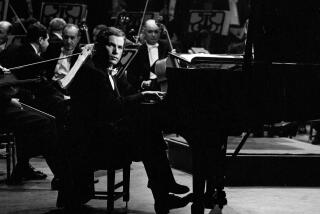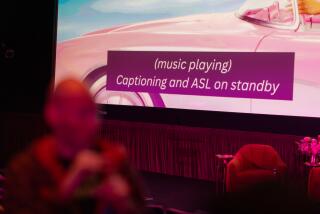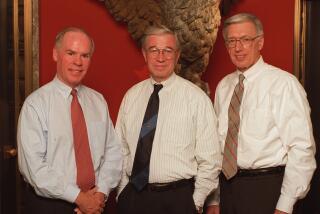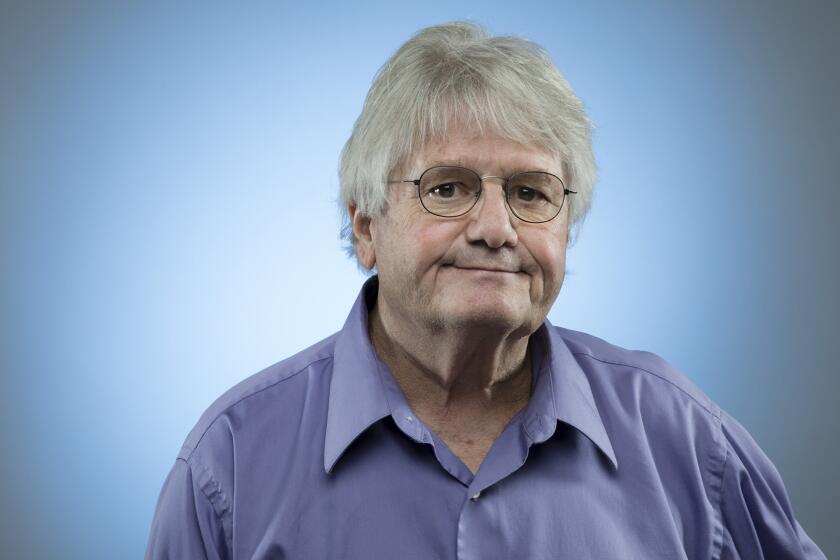James C. Marsters dies at 85; Pasadena orthodontist helped establish phone use for the deaf
James C. Marsters, a Pasadena orthodontist who with two other deaf men co-developed a teletypewriter in the 1960s that opened up phone use -- and the wider world -- to the deaf, has died. He was 85.
Marsters, who was the last survivor of the trio of innovators, died July 28 at his home in Oakland after a short illness, said his daughter, Jean.
With a physicist and an engineer-businessman, Marsters helped create a modem in 1964 that linked a teletypewriter to traditional phone lines and converted audio tones into typed messages.
The accomplishment brought profound independence and dramatic social change to the deaf community, said Harry G. Lang, a professor at the National Technical Institute for the Deaf in Rochester, N.Y., who chronicled the feat in his 2000 book, “A Phone of Our Own.”
“It was a technological declaration of independence for deaf people,” Lang, who is deaf, told The Times in an e-mail. “It was a very important breakthrough in terms of access. This meant new opportunities to develop leadership roles, new types of employment where the telephone was no longer a barrier.”
Although Robert Weitbrecht, a Stanford Research Institute physicist, did most of the hands-on work, he considered Marsters the invention’s “founding father” because the orthodontist had conceived the idea, brought it to him and championed its use, according to the 1995 edition of “Deaf Persons in the Arts and Sciences.”
With another colleague, Andrew Saks -- grandson of the founder of Saks Fifth Avenue department stores -- Marsters pushed to spread the use of the device, refurbishing donated teletype machines and persuading deaf people to give the new technology a chance.
Marsters “was the public speaker, the can-do man who wouldn’t take no for an answer,” his daughter said. “The three were a great team.”
Their task was made more difficult because they had to work to overcome barriers imposed by telephone companies.
Bill Saks, Andrew’s son, said “people don’t realize it, but Ma Bell had absolute control over how her instruments were used, and there were draconian consequences for . . . attaching anything to their devices. The phone companies were the Goliaths. Those three gentlemen were the Davids.”
James Carlyle Marsters was born April 5, 1924, in Norwich, N.Y., the second of two sons of Guy Marsters, a pharmaceutical executive, and his wife, Anna Belle, a nurse.
Marsters became deaf after a bout of scarlet fever as an infant and was taught from an early age to lip-read and speak.
After graduating in 1943 from the Wright Oral School for the Deaf in New York City, he earned a bachelor’s degree in chemistry in 1947 from Union College in Schenectady, N.Y.
Unable to find more demanding employment, he went to work at a New York necktie factory owned by his father-in-law, who encouraged him to study dentistry. His brief first marriage, to Joan Tausik, a deaf painter, ended in divorce.
Almost every dental school Marsters applied to turned him down, but New York University granted him provisional enrollment, his family said, and he graduated in 1952.
In dental school, he sometimes pretended he was hard of hearing instead of deaf because he thought it would lessen the concerns of his professors, Marsters later recalled.
Years later, he took a similar approach when he regularly flew his plane to Lone Pine, where he had a second office.
Announcing he was deaf invariably caused panic in the landing tower, so he would pretend his radio wasn’t receiving properly. He would talk to the air-traffic controllers, who communicated in return with flashing lights, his daughter said.
On the advice of a roommate from Wright Oral School -- John Tracy, actor Spencer Tracy’s son and namesake of the Los Angeles clinic that helps hearing-impaired children and their families -- Marsters moved west and studied to be an orthodontist at USC.
In 1954, he opened his orthodontic practice in Pasadena and a year later married Alice Amelia Dorsey, who was director of the John Tracy Clinic’s preschool. He retired in 1990.
“If my dad got a phone call from his insurance agent, or anybody, I had to listen, mouth the words, then he would lip-read and reply with his voice,” his daughter said. “Every single phone conversation was like that when I was a child.”
So imagine Marsters’ unbridled joy when he and Weitbrecht made history in 1964 by making the first long-distance teletypewriter call on a traditional telephone line. At first the communication between their homes in Pasadena and Redwood City was garbled, but the typed words were soon clear and concise.
“Are you printing me now?” Weitbrecht asked Marsters. “Let’s quit for now and gloat over the success.”
Weitbrecht died in 1983 and Saks died in 1989.
Marsters’ wife, Alice, died in 2003.
He is survived by their children, James Marsters Jr., a chemist, of Oakland, Jean Marsters, a doctor, and Guy Marsters, a musician, both of Pasadena; and two grandchildren.
A memorial service is being planned for October in Oakland.
Memorial donations may be made to the Jean Weingarten Peninsula Oral School, deafkidstalk.org, or the John Tracy Clinic, johntracyclinic.org.
More to Read
Start your day right
Sign up for Essential California for the L.A. Times biggest news, features and recommendations in your inbox six days a week.
You may occasionally receive promotional content from the Los Angeles Times.







